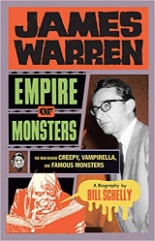 I loved comic books as a child, but because I was rather sheltered, many of them were off-limits, especially the forbidden fruit bearing the phrase “A Warren Magazine.” For years, those issues incessantly teased me from the rack at Pratt’s Grocery. Still, I devoured Bill Schelly’s James Warren, Empire of Monsters: The Man Behind Creepy, Vampirella, and Famous Monsters as if I were part of the club all along. A breeze of a read, the biography of Warren paints him as something as the Roger Corman of comics: a cheapskate, but something of a talent farmer. The latter gives Schelly a wealth of sources to tap since Warren — something of a recluse — did not directly participate. What’s surprising is how little a role Forrest J. Ackerman, the public face of Warren’s Famous Monsters cash cow, plays in the overall picture; that’s to the book’s benefit, as Warren is quite the personality on his own, sexual quirks and all. Meriting cameos in his rags-to-riches-and-back-again tale are Gloria Steinem, Stephen King, Hugh Hefner, Jane Fonda, Al Adamson, John Cleese and Fred Flintstone — only one of those a bedroom conquest. Coming from Fantagraphics, the hardcover is quite the beauty in the design department (kudos, Keeli McCarthy) and boasts an eight-page color insert of those gorgeously painted Warren covers that will have you crying for a full book of them.
I loved comic books as a child, but because I was rather sheltered, many of them were off-limits, especially the forbidden fruit bearing the phrase “A Warren Magazine.” For years, those issues incessantly teased me from the rack at Pratt’s Grocery. Still, I devoured Bill Schelly’s James Warren, Empire of Monsters: The Man Behind Creepy, Vampirella, and Famous Monsters as if I were part of the club all along. A breeze of a read, the biography of Warren paints him as something as the Roger Corman of comics: a cheapskate, but something of a talent farmer. The latter gives Schelly a wealth of sources to tap since Warren — something of a recluse — did not directly participate. What’s surprising is how little a role Forrest J. Ackerman, the public face of Warren’s Famous Monsters cash cow, plays in the overall picture; that’s to the book’s benefit, as Warren is quite the personality on his own, sexual quirks and all. Meriting cameos in his rags-to-riches-and-back-again tale are Gloria Steinem, Stephen King, Hugh Hefner, Jane Fonda, Al Adamson, John Cleese and Fred Flintstone — only one of those a bedroom conquest. Coming from Fantagraphics, the hardcover is quite the beauty in the design department (kudos, Keeli McCarthy) and boasts an eight-page color insert of those gorgeously painted Warren covers that will have you crying for a full book of them.
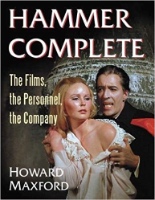 Howard Maxford’s Hammer Complete: The Films, the Personnel, the Company is every bit the monster as the vampire adorning its cover; at almost 1,000 pages and 6 pounds, the McFarland & Company hardback demands such a description. Of course, per the title, the book is about more than Dracula, Frankenstein, the Mummy and other creatures that turned the once-moribund UK studio into a name brand forever associated with horror and fantasy cinema. Fifteen years in the making, Hammer Complete arrives with an admirable mission: Cover all things Hammer from A (Abady, Temple) to Z (Zuber, Marc). In essence, the book functions not as a cover-to-cover read, but as an encyclopedia, with luminaries like Ingrid Pitt and Peter Cushing meriting multiple pages. It’s thorough as hell, I’ll give it that — more thorough than thorough, even. Just when I was ready to ding it for not including movies announced but never produced (e.g., Vampirella), I arrive at an appendix of just that: pages and pages of them! For my money, I still find Tom Johnson and Deborah Del Vecchio’s Hammer Films: An Exhaustive Filmography (also from McFarland) to be the more useful resource, even if its 1996 publication means you won’t find the recent revival titles (such as The Woman in Black, Wake Wood and The Resident) that Maxford does.
Howard Maxford’s Hammer Complete: The Films, the Personnel, the Company is every bit the monster as the vampire adorning its cover; at almost 1,000 pages and 6 pounds, the McFarland & Company hardback demands such a description. Of course, per the title, the book is about more than Dracula, Frankenstein, the Mummy and other creatures that turned the once-moribund UK studio into a name brand forever associated with horror and fantasy cinema. Fifteen years in the making, Hammer Complete arrives with an admirable mission: Cover all things Hammer from A (Abady, Temple) to Z (Zuber, Marc). In essence, the book functions not as a cover-to-cover read, but as an encyclopedia, with luminaries like Ingrid Pitt and Peter Cushing meriting multiple pages. It’s thorough as hell, I’ll give it that — more thorough than thorough, even. Just when I was ready to ding it for not including movies announced but never produced (e.g., Vampirella), I arrive at an appendix of just that: pages and pages of them! For my money, I still find Tom Johnson and Deborah Del Vecchio’s Hammer Films: An Exhaustive Filmography (also from McFarland) to be the more useful resource, even if its 1996 publication means you won’t find the recent revival titles (such as The Woman in Black, Wake Wood and The Resident) that Maxford does.
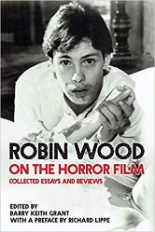 If he were alive today, Robin Wood would’ve been tickled pink over the current horror resurgence, from arthouse to Blumhouse. As the new book Robin Wood on the Horror Film: Collected Essays and Reviews proves pound for pound, page by page, he was arguably the first film critic to take the genre seriously, whereas his peers equated it to pornography. Compiled by Barry Keith Grant (The Dread of Difference), the Wayne State University Press release contains everything Wood ever wrote on the subject, save for one paragraph, making it an automatic must-have for genre enthusiasts’ home libraries. Like any serious film critic, Wood could be accused of reading too much into things, but that’s the exception, not the norm; furthermore, his prose is simply pleasurable to read. Unlike any serious film critic, his attention to horror wasn’t limited to Alfred Hitchcock and George A. Romero; yes, those are here, of course, but so are Lewis Teague’s Cujo and Gary Sherman’s Raw Meat, which he champions so fervently, it’s infectious — David Cronenberg pun not intented. —Rod Lott
If he were alive today, Robin Wood would’ve been tickled pink over the current horror resurgence, from arthouse to Blumhouse. As the new book Robin Wood on the Horror Film: Collected Essays and Reviews proves pound for pound, page by page, he was arguably the first film critic to take the genre seriously, whereas his peers equated it to pornography. Compiled by Barry Keith Grant (The Dread of Difference), the Wayne State University Press release contains everything Wood ever wrote on the subject, save for one paragraph, making it an automatic must-have for genre enthusiasts’ home libraries. Like any serious film critic, Wood could be accused of reading too much into things, but that’s the exception, not the norm; furthermore, his prose is simply pleasurable to read. Unlike any serious film critic, his attention to horror wasn’t limited to Alfred Hitchcock and George A. Romero; yes, those are here, of course, but so are Lewis Teague’s Cujo and Gary Sherman’s Raw Meat, which he champions so fervently, it’s infectious — David Cronenberg pun not intented. —Rod Lott


 After new student Sarah T.’s (Linda Blair) hopes are dashed when she fails to make it into the glee club, she begins a staggering road to faux-drunkenness in the classic made-for-TV melodrama
After new student Sarah T.’s (Linda Blair) hopes are dashed when she fails to make it into the glee club, she begins a staggering road to faux-drunkenness in the classic made-for-TV melodrama 

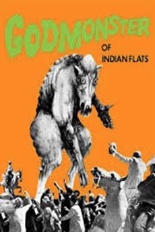
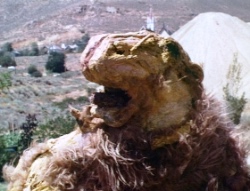

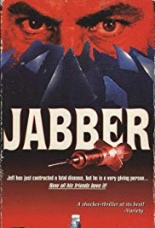

 In the Deep South, because where else, Tom Eldridge (Mark Miller,
In the Deep South, because where else, Tom Eldridge (Mark Miller, 